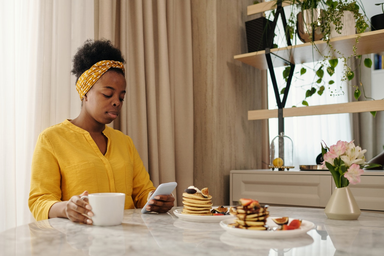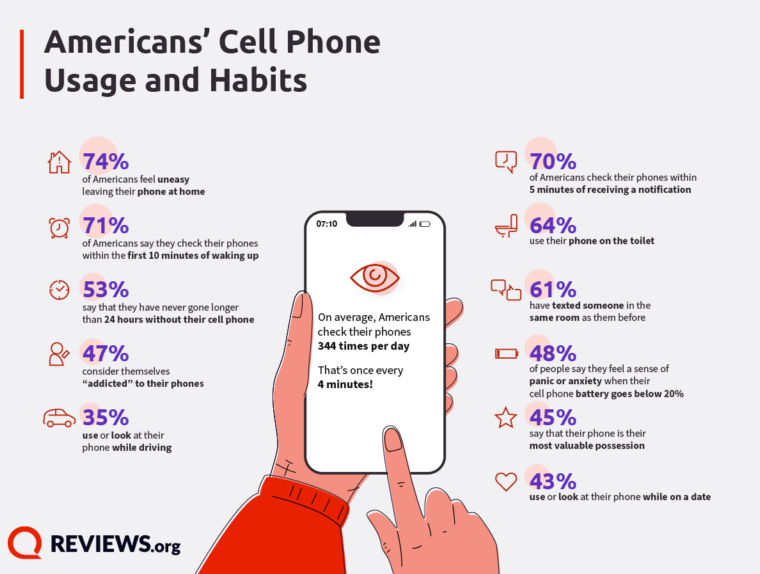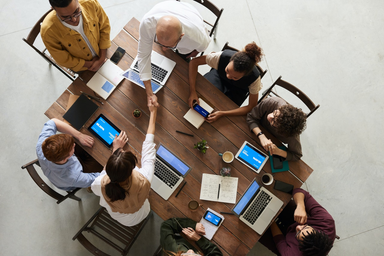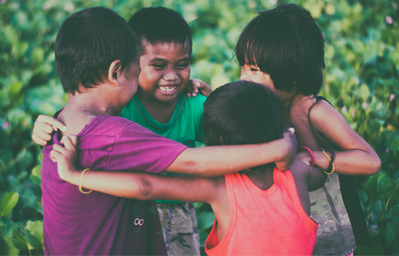The Mental Impact On Our Virtual Lives

According to research, as of 2021, about 4.2 billion people utilize social media, roughly 58.4% of the global population. According to Merriam-Webster, social media is “a form of electronic communication where users can share videos, messages, and ideas with their curate community.” This encompasses platforms such as Instagram, Tiktok, YouTube, and even Pinterest. As social media usage skyrockets, so do the rate of mental health illnesses such as depression, anxiety, and suicidal ideation.
In 2020 the National Alliance of Mental Illness released the impact on mental health:
- 1 in 5 experience mental health
- 1 in 20 experience serious mental health illness
- One in15 suffered mental health issues and substance abuse
- Over 12 million people experienced suicidal ideations
 Reviews.org
Reviews.org
Social media allows us to curate the life we want virtually; between filters and editors, you can be whoever you want to be very quick. However, does the impact of trying to obtain a certain status on these platforms outweigh what it is doing to our minds? Studies have shown that Americans spend around 4 to 6 hours daily on their smartphones, with some experiencing phenomena such as Phantom Vibration Syndrome.
Phantom Vibration Syndrome is when you believe your phone is vibrating. One study found that 89% of undergraduate students experienced phantom vibration and did not see it as concerning. Others, however, have been very transparent that they may have an unhealthy, even an addictive, relationship with their smartphone.
Another phenomenon is Social Media Anxiety Disorder,often referred to as FOMO, which is the constant need to check on your online friends and followers to ensure you are not missing out. Unfortunately, these individuals are also more likely to lie about how much time they spend using their phones and experience severe withdrawal symptoms when unable to use social media.
Individuals are also experiencing numerous forms of violence linked to social media usage. The Pew Research Center’s 2018 survey of U.S. teens showed that one in six teenagers had experienced at least one of six different forms of abusive behavior online:
- Name-calling (42%)
- Spreading false rumors (32%)
- Receiving unsolicited explicit images (25%)
- Having their activities and whereabouts tracked by someone other than a parent (21%)
- Someone making physical threats (16%)
- Having explicit images of them shared without their consent (7%)
There is also a correlation between body dysmorphia and social media in young adolescent girls, and some organizations are going as far as banning filters for their product promotions. As social media grows, so does our need to create checks and balances to have a healthy natural world life and an online presence. Below are some ways to protect your mental health from the downside of social media.
Tips on balancing social media usage:
- Implement downtime or screentime on your phone. This allows you not to pass a certain amount of time daily.
- Try a 30-day social media cleanse! Instead of checking your phone recenter on a new activity.
- Do not grab your phone for the first hour and last hour of the day.
- Unfollow accounts and people that are not good for your mind.
- Try automating your social media posts for your accounts to avoid logging in.
- Go outside! Nature and yoga can help to reconnect.
- Try to refrain from using your phone when hanging out with friends and family.
- Speak to your therapist if you feel you have an unhealthy relationship with social media.
Social media has its ups and downs, but it has proven influential when creating community and connecting across platforms. However, we have to keep in mind that social media can create moments of depression and anxiety, and in a time when you almost need to be interconnected, make time for yourself.
Site content is provided for informational purposes only and is not intended to be a substitute for professional medical advice, diagnosis, or treatment.


